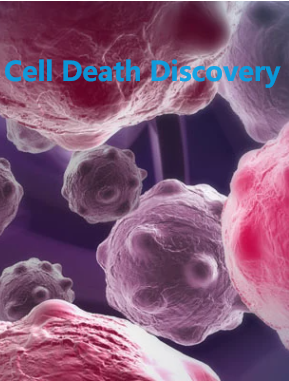Cysteine-rich intestinal protein family: structural overview, functional diversity, and roles in human disease.
IF 6.1
2区 生物学
Q1 CELL BIOLOGY
引用次数: 0
Abstract
The cysteine-rich intestinal protein (CRIP) family, including CRIP1, CRIP2, and CRIP3, is a subfamily of the highly conserved Lin-1, Isl1, Mec3/double zinc finger protein family that exhibits diverse biological functions. The CRIP family is known to play an important role in cellular epithelial-mesenchymal transition, cell death, and tumor progression and participate in multiple signaling pathways. This article summarizes the roles and potential molecular mechanisms of the CRIP family in diseases, which will help to explore new research directions for this family and provide useful information for clinical applications such as disease diagnosis and treatment.
求助全文
约1分钟内获得全文
求助全文
来源期刊

Cell Death Discovery
Biochemistry, Genetics and Molecular Biology-Cell Biology
CiteScore
8.30
自引率
1.40%
发文量
468
审稿时长
9 weeks
期刊介绍:
Cell Death Discovery is a multidisciplinary, international, online-only, open access journal, dedicated to publishing research at the intersection of medicine with biochemistry, pharmacology, immunology, cell biology and cell death, provided it is scientifically sound. The unrestricted access to research findings in Cell Death Discovery will foster a dynamic and highly productive dialogue between basic scientists and clinicians, as well as researchers in industry with a focus on cancer, neurobiology and inflammation research. As an official journal of the Cell Death Differentiation Association (ADMC), Cell Death Discovery will build upon the success of Cell Death & Differentiation and Cell Death & Disease in publishing important peer-reviewed original research, timely reviews and editorial commentary.
Cell Death Discovery is committed to increasing the reproducibility of research. To this end, in conjunction with its sister journals Cell Death & Differentiation and Cell Death & Disease, Cell Death Discovery provides a unique forum for scientists as well as clinicians and members of the pharmaceutical and biotechnical industry. It is committed to the rapid publication of high quality original papers that relate to these subjects, together with topical, usually solicited, reviews, editorial correspondence and occasional commentaries on controversial and scientifically informative issues.
 求助内容:
求助内容: 应助结果提醒方式:
应助结果提醒方式:


